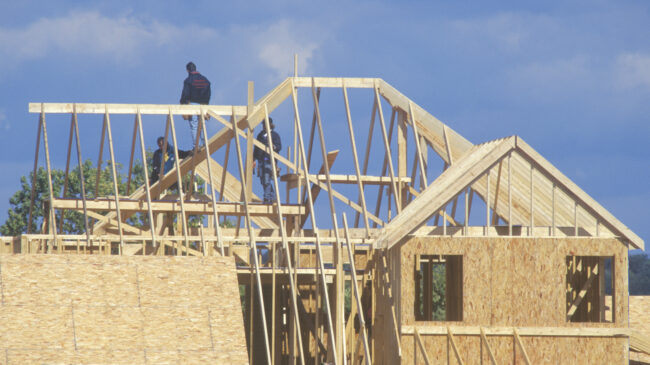A lack of U.S. housing inventory is helping push home prices to record heights. Today, the average home buyer is increasingly unable to afford a home in many metropolitan areas. The Wall Street Journal recently reported, “The median existing-home price [in the US] rose 15% in March from a year earlier to $375,300.”
As inflation rises, the cost of buying a home is also going up even more because the 30-year residential home interest rate has increased from less than 4% to almost 5.5%. Rising inflation is also causing Americans to spend more on basic staples, such as food and gasoline, and Americans have fewer savings available than at any time in the last three years, with the average savings rate decreasing every month but one since July 2021. The result of these and other trends means homeownership is increasingly out of reach for many working-class and middle-class Americans.
The biggest changes to housing policy need to be made at the local level, where governments need to make changes to zoning laws, building-approval processes, and height limits that prevent more housing from hitting the market.
The Washington, D.C., region is a prime example of how harmful housing regulations reduce supply and drive up prices. The region has the fourth most expensive housing stock in the country, despite lacking the oceans and the mountains that serve as natural geographical barriers in the other metropolitan areas— San Francisco, New York, Los Angeles, and Honolulu—that make up the rest of America’s five most expensive housing markets.
The first step is to relax Euclidean zoning regulations. Despite the demand for townhouses and smaller houses, Prince George’s County, Maryland, still has a preponderance of single-family homes zoned on a one-acre or larger lot. Local planners should allow mixed-use zoning as long as there are no public health problems (the original justification for Euclidean zoning).
The region should allow buildings to be set closer to the road, stop requiring that developers include a minimum number of parking spaces for residential developments, and allow multiple housing types to be constructed in the same development.
In suburban areas, single-family homes, cottage courts, and side-by-side duplexes might be a good fit. In central cities, cottage courts, side-by-side duplexes, and small multiplexes might be appropriate. Let all options and choices bloom.
The region also needs to eliminate onerous restrictions for the reconstruction of multi-family housing. Arlington County, Virginia, likes to fashion itself as one of the most progressive communities in the country. But its zoning code reads like it was written in 1922 instead of 2022. Arlington Now spotlighted how Arlington County’s zoning process is making multi-family housing too expensive to build. Renovating multi-family housing on an existing lot requires a community review, a planning commission approval, and county board approval. Yet, renovating a single-family home requires a board of zoning appeals review only. The multi-family review process should be streamlined.
Fast-growing areas also need to eliminate growth restrictions, such as large lot zoning, agricultural reserves, height limitations, and floor area ratios.
Suburban Loudoun County, Virginia, has a de facto urban growth boundary along U.S. Route 15 preventing growth in the western half of the county.
Montgomery County, Maryland, has set aside a third of its total land area as an agricultural reserve limiting growth northwest of D.C., even as the region’s metropolitan planning organization (MPO), the Washington Metropolitan Council of Governments, reports that there is virtually no agricultural activity in this “agriculture reserve.”
Meanwhile, the District of Columbia imposes a height limit of 130 feet. The height limit was not enacted to prevent structures from being taller than the U.S. Capitol but is a 19th-century relic that was intended to ensure a fire truck’s ladder could access the top floor of a building and could clearly be done away with now.
Fairfax County, Virginia, has a strict floor-area-ratio (FAR) limit—the ratio of a building’s floor area to the lot, of 0.25. This ratio prevents building on 75% of a property. Similar suburban districts across the country have FARs of 0.40 or higher.
In addition to getting rid of these bad policies, leaders also need to fight back against Not In My Backyard (NIMBY) activists. Many NIMBYs make bogus claims, such as building more housing will lead to more crime, less tree cover, and negatively change neighborhood character. While some of these concerns are understandable, they are often exaggerated and can almost always be reasonably addressed or debunked.
For example, key environmental areas can be protected without preserving all of the nation’s abundant farmland. It would take about 30% of existing U.S. farmland to feed all of America.
Eliminating unnecessary restrictions that are driving up housing prices would enable regions to build the amount of housing that metro areas need. This would help ensure housing and the American dream of owning a home doesn’t continue to become a luxury good only available to upper-income Americans. Eliminating the housing shortage, which would put downward pressure on housing prices in metro areas, would help solve one of the biggest problems facing American cities and the workers under the age of 40 they hope to attract.

